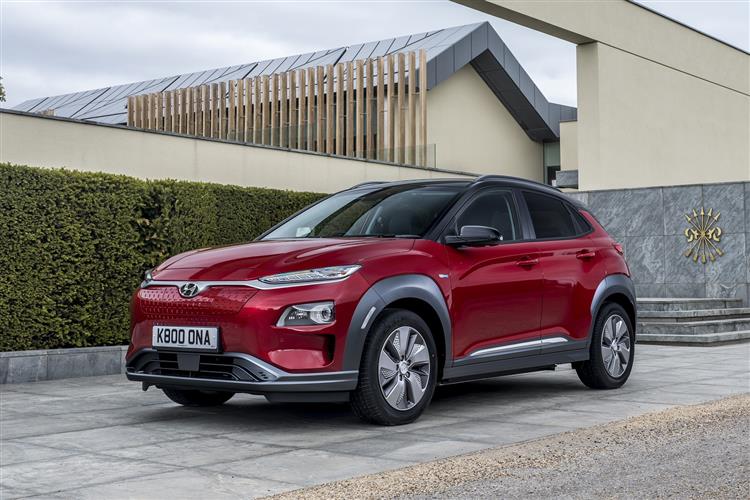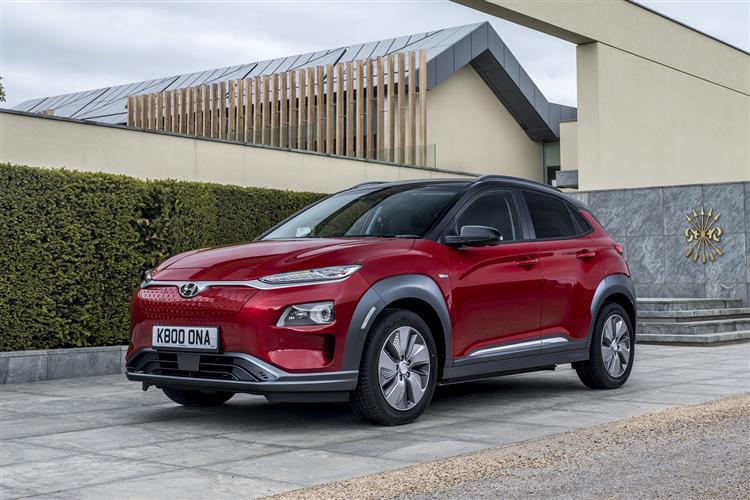The way this car hurls itself away from rest is pretty surprising the first time you experience it. Once you understand the drive dynamics here though, the rush of blood to the head that this Hyundai gets every time you press the loud pedal with any real vigour is only to be expected. There’s a lot more pulling power than would be generated by an equivalent combustion engine – 395Nm of torque – and all of it’s delivered to you right from the get-go, rather than building, as it would do with a fossil-fuelled powerplant. 62mph from rest takes 9.7s in the entry-level 39kWh version, which has a reasonable WLTP-rated 180 mile driving range between charges. But most Kona Electric customers are going to want the 64kWh variant we’re trying here, which manages a WLTP-rated range of 279 miles that sets a new standard amongst affordable EVs.
Conserving that driving range requires careful management of the energy regenerative process that kicks in when you come off the throttle. Like some other EVs, this one provides you with paddleshifters behind the steering wheel that allow you to either intensify or reduce the regenerative braking feel. Alternatively, you can automise things using a ‘Smart Regenerative Braking System’ that constantly calculates the optimum level of braking regeneration, based on the positioning of vehicle ahead. On the open road, this car struggles a little with weight (it’s 300kgs heavier than a conventional Kona) but the even distribution of the battery pack across the floor plan helps with handling and a more advanced independent rear suspension set-up has allowed the engineers to deliver a decent quality of ride.
When Hyundai created its first mainstream electric car, the IONIQ, it started from a clean sheet of paper. But with this Kona Electric, the company’s keen to show that EV design can be just as effective when it uses a shared platform and body shell with combustion-engined cars. It helps that the model in question here is a high-riding SUV, so the batteries can be packaged in more easily without affecting cabin space, spread across the floorplan for a low centre of gravity, as they would be in a Tesla.

At the wheel, key change lies with the installation of this wider aircraft-style silver-trimmed centre console, which incorporates the ‘shift-by-wire’ push-button controls for the single-speed auto gearbox. And additionally includes a useful extra storage area in its lower section. Also quite different is the single-dial instrument binnacle, flanked on the right by an information screen and on both sides by EV read-outs. Everything else you’ll need to know will be on this centre-dash screen, 8-inches in size on most variants, with mapping functionality that integrates into range read-outs and helps you to locate nearby charging stations.
And in the rear? Well it’s in this part of the car that you’re likely to be most keenly reminded that you’ve bought an SUV based on a supermini-sized platform, rather than that of a family hatchback. The same applies to the capacity of the 332-litre boot.
For the first time, a relatively affordable EV has delivered the kind of relatively usable driving range that would make it almost usable as an only car. Better still, for almost the first time in testing an EV, we’ve found here that the claimed range isn’t so far away from what’s actually achievable in everyday use.
In a Volkswagen e-Golf, you’d get a classier interior. In a Nissan LEAF, you’d get more rear seat passenger space. But both those cars are completely trounced by the driving range this Kona Electric can offer in its higher output form. Which is something that only this car’s Kia cousin can match for the price. This Kona though, has wider appeal. Enough to take it mainstream? Probably not. It won’t be on sale in large enough numbers for a start. But it’s a clearer signpost to an all-electric future than any we’ve seen for a while. And that makes it a very important car indeed.




